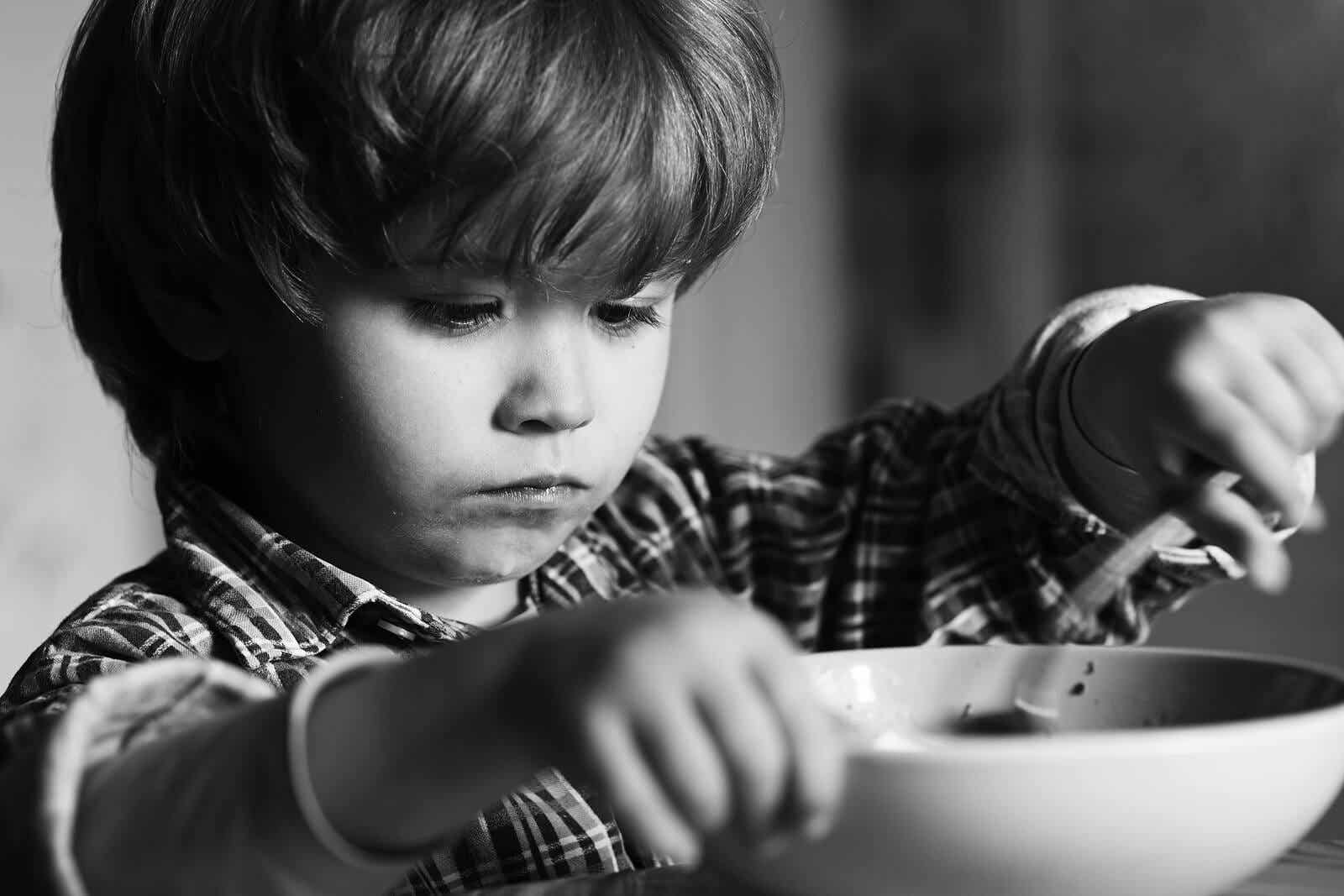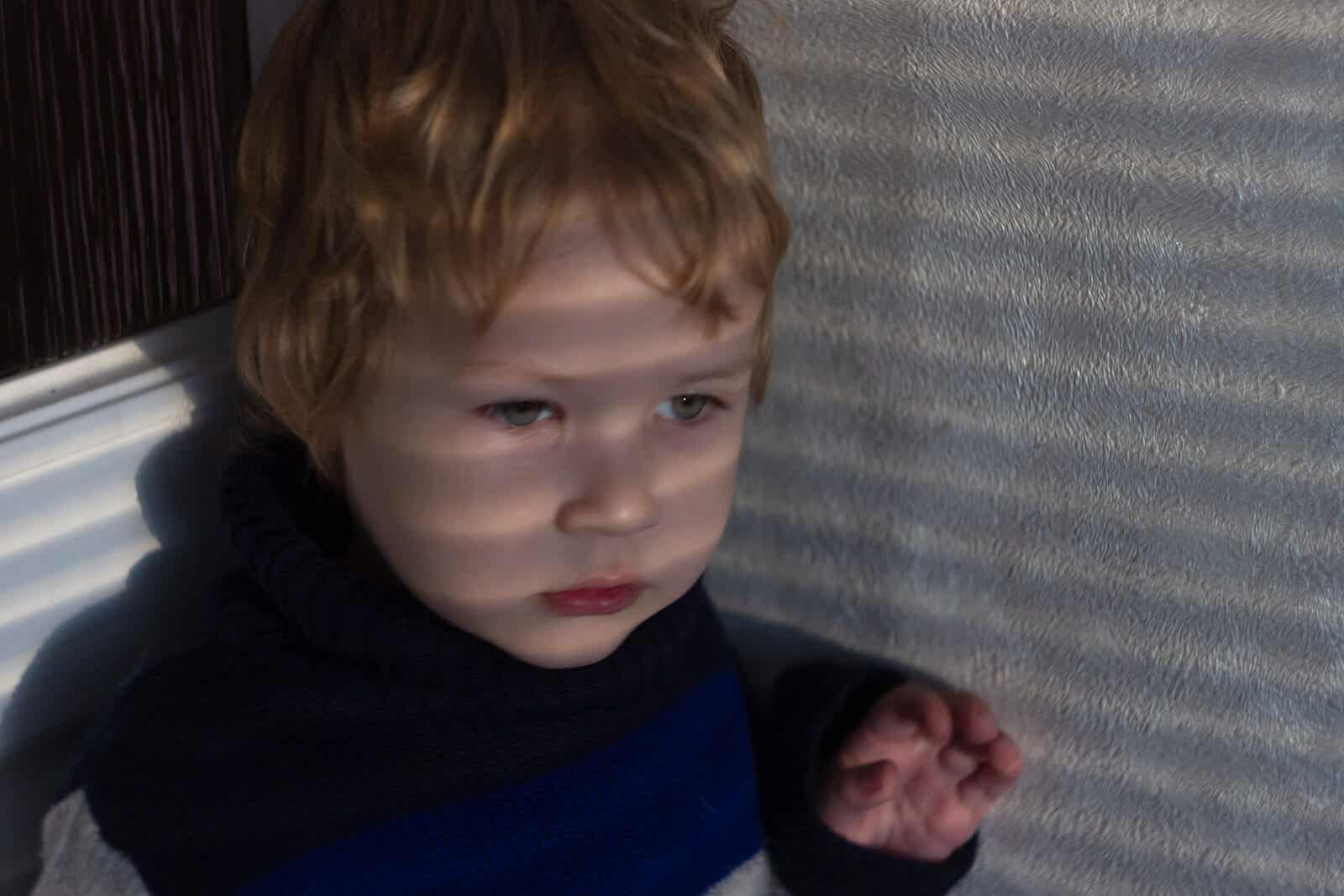How to Know if Children are Happy with the Three Wishes Test


Written and verified by the psychologist Mara Amor López
For all parents, our greatest wish in life is for our children to be happy. But what’s happiness for a child? To find out if your children are truly happy, you can use the three wishes test. With it, you can find out how children feel in their inner world and, therefore, know if they enjoy their life.
This technique can help us have a better idea of whether or not our children enjoy life or, on the contrary, feel anxious and fearful. This way, if we know how they feel, we can find a solution if we see that there’s a problem.
The three wishes test: What does happiness mean for children?
Happiness could be defined as “a feeling of satisfaction that we can feel in a moment and in which there’s no suffering that distresses us”.
There may be many more definitions, but, in the case of children, it is different. For them, happiness lies in the simplest things. Another characteristic of happiness is that it’s a subjective feeling; what makes one child happy may not make another happy, nor do they necessarily experience the same sense of fulfillment, self-esteem, and well-being.

To be happy, you don’t need to start from any previous state. And for this reason, there are children who always radiate happiness and feel at ease with their life and their environment, while there are other children who, even having all the conditions to be happy, aren’t happy, are always dissatisfied, and constantly want and desire more.
What external conditions should we provide for children to feel happy?
It’s important that, in order for a child to feel satisfied and happy, we provide them with some basic external conditions. These are as follows:
- To always have their basic needs met, such as food, clothing, a home, etc
- A healthy environment in which respect is shown among the members and harmony is breathed
- Education in positive values
- Access to education, either at school or at home
- Parents or guardians that provide protection, love, and affection
- Moments of play and fun with them
- A secure attachment style so that they feel loved at all times
- Social relationships with peers and adults that are healthy and positive
What skills and qualities should be fostered in children so that they appreciate things and feel satisfied and happy?
Just as we have to provide children with external conditions, we also have to encourage certain qualities and skills so that they feel happy and satisfied with their lives. These are as follows:
- Optimism towards life
- Gratitude
- The capacity to adapt and be flexible
- Sensitivity and empathy
- Tolerance to frustration
- Respect and honesty
- Solidarity and generosity
- The ability to solve problems
It’s true that many aspects are determined by the personality and character of children. However, most of the above skills depend on the way the children are raised.
What’s the three wishes test to know if our child is happy?
The three wishes test is widely used in therapy to find out what moment children are in. In other words, if they’re happy or, on the contrary, if they feel upset or worried about something. The question we have to ask children would be the following: “If you could ask for three wishes, what would you ask for?
The answers may vary but, next, we’re going to see how some of them relate to a child’s current state of mind.
Happy children
If children are happy, some of their answers may be:
- “My favorite video games.”
- “Superpowers.”
- “A pet.”
- “A trip.”
- “A toy” or “All the toys in the world.”
- “An ice cream cone.”
Highly sensitive children
Highly sensitive children care not only about themselves but also about others. Therefore, they make wishes regarding the well-being of others as well. Some of these children’s answers may be similar to the following:
- “That there will be no earthquakes.”
- “That animals won’t become extinct.”
- “That my family be very happy.”
- “That no would die.
- “That the world won’t be polluted.”

Overwhelmed children
There are answers that children provide that can be an indication that they’re feeling overwhelmed or stressed. And, therefore, they’re less happy at that moment. Answers like the following serve as examples:
- “To get better grades.”
- “To be better looking.”
- “That I didn’t have to go to school.”
- “Not to feel afraid.”
- “That my parents wouldn’t get mad at me.”
- “To be smarter”.
- “That my parents don’t fight”.
- “To have more friends.”
Depending on the answer given, it may indicate that the child has a social, family, or personal problem, lack of self-esteem, or lack self-confidence, etc.
What do the answers in the three wishes test mean?
Any answer provides us with information about how our children feel and what they’re like, whether or not they’re enjoying life, and whether or not we need to intervene.
This technique can be used as part of a game in which all members of the household write down three wishes and tell the others about them. This will give us valuable information about our children.
Conclusions regarding the three wishes test
Ultimately, parents don’t have control over everything that happens to their children, so with the three wishes test, we can know what’s happening to our children and what prevents them from being happy and enjoying life.
So, knowing this, we can help them to face the problems. And, in the case of those problems that we can’t manage on our own, seek professional help and continue to do what we can to provide them with the happiness and well-being they need.
For all parents, our greatest wish in life is for our children to be happy. But what’s happiness for a child? To find out if your children are truly happy, you can use the three wishes test. With it, you can find out how children feel in their inner world and, therefore, know if they enjoy their life.
This technique can help us have a better idea of whether or not our children enjoy life or, on the contrary, feel anxious and fearful. This way, if we know how they feel, we can find a solution if we see that there’s a problem.
The three wishes test: What does happiness mean for children?
Happiness could be defined as “a feeling of satisfaction that we can feel in a moment and in which there’s no suffering that distresses us”.
There may be many more definitions, but, in the case of children, it is different. For them, happiness lies in the simplest things. Another characteristic of happiness is that it’s a subjective feeling; what makes one child happy may not make another happy, nor do they necessarily experience the same sense of fulfillment, self-esteem, and well-being.

To be happy, you don’t need to start from any previous state. And for this reason, there are children who always radiate happiness and feel at ease with their life and their environment, while there are other children who, even having all the conditions to be happy, aren’t happy, are always dissatisfied, and constantly want and desire more.
What external conditions should we provide for children to feel happy?
It’s important that, in order for a child to feel satisfied and happy, we provide them with some basic external conditions. These are as follows:
- To always have their basic needs met, such as food, clothing, a home, etc
- A healthy environment in which respect is shown among the members and harmony is breathed
- Education in positive values
- Access to education, either at school or at home
- Parents or guardians that provide protection, love, and affection
- Moments of play and fun with them
- A secure attachment style so that they feel loved at all times
- Social relationships with peers and adults that are healthy and positive
What skills and qualities should be fostered in children so that they appreciate things and feel satisfied and happy?
Just as we have to provide children with external conditions, we also have to encourage certain qualities and skills so that they feel happy and satisfied with their lives. These are as follows:
- Optimism towards life
- Gratitude
- The capacity to adapt and be flexible
- Sensitivity and empathy
- Tolerance to frustration
- Respect and honesty
- Solidarity and generosity
- The ability to solve problems
It’s true that many aspects are determined by the personality and character of children. However, most of the above skills depend on the way the children are raised.
What’s the three wishes test to know if our child is happy?
The three wishes test is widely used in therapy to find out what moment children are in. In other words, if they’re happy or, on the contrary, if they feel upset or worried about something. The question we have to ask children would be the following: “If you could ask for three wishes, what would you ask for?
The answers may vary but, next, we’re going to see how some of them relate to a child’s current state of mind.
Happy children
If children are happy, some of their answers may be:
- “My favorite video games.”
- “Superpowers.”
- “A pet.”
- “A trip.”
- “A toy” or “All the toys in the world.”
- “An ice cream cone.”
Highly sensitive children
Highly sensitive children care not only about themselves but also about others. Therefore, they make wishes regarding the well-being of others as well. Some of these children’s answers may be similar to the following:
- “That there will be no earthquakes.”
- “That animals won’t become extinct.”
- “That my family be very happy.”
- “That no would die.
- “That the world won’t be polluted.”

Overwhelmed children
There are answers that children provide that can be an indication that they’re feeling overwhelmed or stressed. And, therefore, they’re less happy at that moment. Answers like the following serve as examples:
- “To get better grades.”
- “To be better looking.”
- “That I didn’t have to go to school.”
- “Not to feel afraid.”
- “That my parents wouldn’t get mad at me.”
- “To be smarter”.
- “That my parents don’t fight”.
- “To have more friends.”
Depending on the answer given, it may indicate that the child has a social, family, or personal problem, lack of self-esteem, or lack self-confidence, etc.
What do the answers in the three wishes test mean?
Any answer provides us with information about how our children feel and what they’re like, whether or not they’re enjoying life, and whether or not we need to intervene.
This technique can be used as part of a game in which all members of the household write down three wishes and tell the others about them. This will give us valuable information about our children.
Conclusions regarding the three wishes test
Ultimately, parents don’t have control over everything that happens to their children, so with the three wishes test, we can know what’s happening to our children and what prevents them from being happy and enjoying life.
So, knowing this, we can help them to face the problems. And, in the case of those problems that we can’t manage on our own, seek professional help and continue to do what we can to provide them with the happiness and well-being they need.
All cited sources were thoroughly reviewed by our team to ensure their quality, reliability, currency, and validity. The bibliography of this article was considered reliable and of academic or scientific accuracy.
- Cassà, È. L. (2005). La educación emocional en la educación infantil. Revista interuniversitaria de Formación del Profesorado, 19(3), 153-167.
- Milicic, N. (2012). A ser feliz también se aprende. GRIJALBO.
This text is provided for informational purposes only and does not replace consultation with a professional. If in doubt, consult your specialist.








